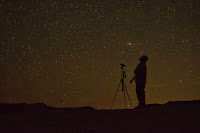Introduction and Monthly Reminders
March has started off with 60° F weather and also snow. On clear nights, I could observe the Moon and Venus in the western sky and, with each passing night, watch the Moon meet up with the other planets in the night sky. I could also observe the Sun (with proper eye protection!) during the cloud-free days. I anxiously awaited the Total Lunar Eclipse on the 13/14 of this month. Still, as the meteorologists predicted, a rainstorm changed to a snowstorm the hours before, during, and after the eclipse. I was excited to try out my new scope to image this eclipse, but I must wait for the next one.
Observers can still enjoy the Vernal (Spring) Equinox and, with it, the Zodiacal Light. Observers may still view most of the Messier objects in a single night if the weather permits for the remainder of March.
Charles Messier
I have talked quite a bit about the Messier Marathon and the objects of the Messier Catalog over my last several posts. I feel it is time to introduce the man behind this catalog of objects, Charles Messier. Born in 1730 in France, Charles Messier became interested in astronomy at an early age by witnessing Comet Klinkenberg-Cheseaux. Unfortunately, a few years prior to the appearance of this comet, Messier's father passed away so he had to give up a formal education to begin working. While Messier was 21, he was recruited by the French Navy to work as a draftsman, creating maps and using astronomical tools. Due to his strong passion for astronomy, Messier quickly became a skilled observer and was promoted to chief astronomer of the Marine Observatory in Paris. Messier could study comets from this newly appointed position, discovering over a dozen, earning him the nickname "Comet Ferret" from King Louis XV.
In 1758, Messier was observing a comet when he became distracted by a fuzzy comet-like object in the constellation Taurus. He noticed that this "comet" did not move against the background stars and made a note in his journal. After viewing the night sky for several years, Messier had cataloged 103 comet-like "objects to avoid" when looking for comets.
The object in 1758 that Messier discovered is known as the Crab Nebula, M1, one of the most spectacular supernova remnants in the sky. Messier's Catalog has grown to 110 objects that must be seen, instead of avoided, by all amateur astronomers. Fortunately for those of us in the northern hemisphere, all of these objects can be viewed throughout the year, or during one single night during late February and early March. While it would be nice to see every object in a single night, I recommend spreading these objects out throughout the year so more time can be spent observing and enjoying these beautiful DSOs.


No comments:
Post a Comment